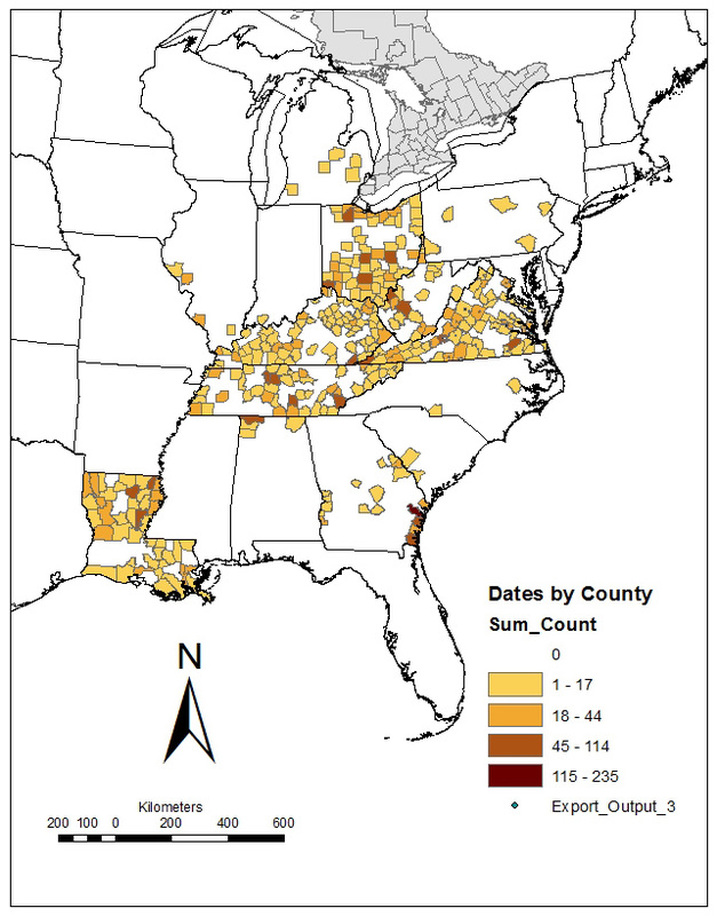Here is a GIS map showing the counts by county of the first 4,870 dates that I've gotten plugged in:
There are still numerous errors and omissions in the database as it currently stands, which is why I'm not prepared to supply the raw data at this point. I've got many dates that are missing key pieces of information (error, site number, county, etc.), and the columns for references are a total mess at this point. As I work through the process of cleaning all that up and trying to fill in blanks, I'll be adding new data. I know of some print publications that will help me fill in some of the large blank areas, and I suspect there are other online or electronic sources of data out there. I've got the UTM coordinates for the counties in most of the Midwest and Southeast (I still haven't done Mississippi and Florida), but I haven't yet started on the tier of states immediately west of the Mississippi River (Arkansas, Missouri, Iowa, and Minnesota) or the Northeast and New England.



 RSS Feed
RSS Feed
